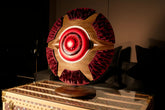The aging process not only enhances the complexities of the cigar’s flavors, but it also gives an overall balance and smoothness that elevates the smoking experience. While there are some who prefer the vibrant, fresh flavors of newly rolled cigars, others see immense value in patiently allowing their cigars to mature and develop over time. All is up to your own preferences.
Choosing the Ideal Humidor

 The cigars’ aging process can take a few months to several years. During this time, the oils in the blinder, filler, and wrapper leaves meld together, creating a more uniform and refined profile. Offer you a more potential, strong and deeper aromas that haven’t been released yet. Before they are put up for sale, the majority of premium cigars have already matured. But once the cigar is rolled and wrapped, the aging process continues.
The cigars’ aging process can take a few months to several years. During this time, the oils in the blinder, filler, and wrapper leaves meld together, creating a more uniform and refined profile. Offer you a more potential, strong and deeper aromas that haven’t been released yet. Before they are put up for sale, the majority of premium cigars have already matured. But once the cigar is rolled and wrapped, the aging process continues.
Optimal Aging Conditions
 The ideal environment for storing cigars typically requires maintaining humidity at around 68-72%. The key is maintaining a consistent environment, as fluctuations can lead to undesirable effects, such as wrapper cracking. With patience and proper storage, the oils and humidity within the cigars will have ample time to break down and harmonize, making for an exceptionally wonderful smoking experience.
The ideal environment for storing cigars typically requires maintaining humidity at around 68-72%. The key is maintaining a consistent environment, as fluctuations can lead to undesirable effects, such as wrapper cracking. With patience and proper storage, the oils and humidity within the cigars will have ample time to break down and harmonize, making for an exceptionally wonderful smoking experience.
While the aging process can benefit a wide range of cigars, there are certain factors that should be considered. Stronger and larger-ring gauge cigars often thrive during extended aging, as they are typically made with a more complex blend of interior tobaccos.
However, it's important to note that the optimal aging duration can vary, with most cigars reaching their peak between 5 to 7 years. There are exceptions, personal preferences play a crucial role in this action. You can choose how long you want to age your cigars. To select the ideal aging timeline, you may decide on the taste and texture you desire.
A kindly reminder: To avoid changing the humidity levels and slowing down the aging process, don’t open the humidor too often while storing some aged cigar.
Weighing the Pros and Cons











